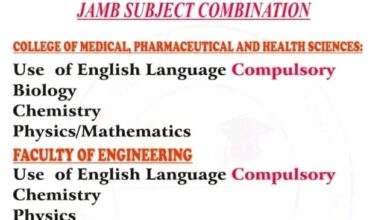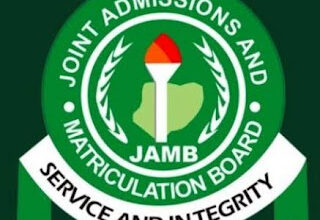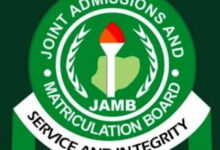Tambayoyi (40) da suke yawan fitowa Biology a Jarrabawar JAMB tare da amsa

Tambayoyi (40) da suke yawan fitowa Biology a Jarrabawar JAMB tare da amsa..
1. In the angiosperm, the sieve tube members are living non-nucleated, but they are usually accompanied by
A. Cork cambium
B. Phloem rays
C. Vascular cambium
D. Companion cells
ANSWER: D (companion cells)
2. Abscisic acid is a chemical that prepares plants for
A. ripening fruits
B. emergence of seedling
C. for leaf fall
D. reproduction
ANSWER: C (leaf fall)
3. In any population, any specific allele will mutate at one time or another, usually to a non-functional or harmful form. The proportion of gametes carrying new mutant alleles of a given locus is called
A. the mutation rate
B. the selection coefficient
C. the relative fitness
D. the lethal genotype
ANSWER: D (lethal genotype)
4. In Mosses, the saprophyte generation is highly prominent producing spores in a cone like
A. gametophyte
B. strobilus
C. antheridium
D. archegonium
ANSWER: B (strobilus)
5. When osmotic acid is boiled with a solution of food substances, it gave a colour black precipitate showing the presence of
A. Fats and oil
B. proteins
C. amino acids
D. starch
ANSWER: A (fat and oil)
6. plants adapted to life in salty march are known as
A. hydrophytes
B. xerophytes
C. halophytes
D. epiphytes
ANSWER: C (halophytes)
7. A circulatory system that does not allow mixing of oxygenated blood in the mammalian heart is referred to as
A. open
B. haemocoelic
C. single
D. closed
ANSWER: D (closed)
8 In a pyramid of numbers, it is common to have with the smallest of individual
A. secondary consumers
B. tertiary consumers
C. primary consumers
D. primary producers
ANSWER: B (tertiary consumers)
9. One of these animal groups contain acoelomate member
A. Mollusca
B. Coelenterata
C. Arthropoda
D. reptilian
ANSWER: B (Coelenterata)
10. A flower that has both stamen and pistil is said to be
A. perfect
B. imperfect
C. pistillate
D. staminate.
ANSWER: A (perfect flower)
See: JAMB Registration Statistics
11. Sting cells are normally found in
A. flatworm
B. Hydra
C. Snails
D. Paramecium
ANSWER: B (hydra)
12. The annulus of fern sporangium helps in
A. spore dispersal
B. conduction of mineral salt
C. trapping of light energy
D. water retention
ANSWER: A (spore dispersal)
13. The respiratory organ in the land snail is
A. Radula
B. mantle
C. tentacle
D. foot
ANSWER: B (mantle)
14. The gill rakers of fishes take part in
A. feeding
B. respiration
C. swimming
D. diffusion
ANSWER: A (feeding)
15. The element common to protein, carbohydrate, and lipid is
A. hydrogen
B. sulphur
C. Nitrogen
D. phosphorous
ANSWER: A (hydrogen)
16. Which of the following is a plant excretory product?
A. Oil
B. cytokinin
C. resin
D. amino acid
ANSWER: C (resin)
17. Epigeal germination can be found in
A. sorghum
B. maize
C. millet
D. groundnut
ANSWER: D (groundnut)
18. Which of the following characters is NOT sex-linked
A. River blindness
B. Baldness
C. Haemophilia
D. Colour blindness
ANSWER: A (river blindness)
19. Which of the following diseases can be prevented by inoculation?
A. Syphilis
B. malaria fever
C. tuberculosis
D. acquired immune deficiency syndrome
ANSWER: C (tuberculosis)
20. Nitrogen-fixing micro-organism in leguminous plants live symbiotically in the
A. root nodules
B. tap roots
C. branch roots
D. root hairs
ANSWER: A (root nodules)
21. Frogs and toads are classified together in the vertebrate class as?
A. Aves
B. Reptiles
C. Amphibians
D. mammalian
ANSWER: C (Amphibians)
22. Blood clotting is helped by
A. Na+
B. K+
C. Ca2+
D. Mg2+
ANSWER: C (Ca2+ )
23. On storage, the sweetness of corn is lost. This is because
A. polysaccharide is reconverted into soluble sugar
B. concentration of sugar increases due to storage
C. conversion of sugar to polysaccharide
D. enzymes responsible for the conversion are destroyed
ANSWER: A (polysaccharide is reconverted into soluble sugar)
24. One of these arthropods is a carrier of viruses and other micro-organisms
A. termite
B. Ant
C. Bee
D. flea
ANSWER: D (flea)
25. The enzyme responsible for curdling of milk in infants is called
A. pepsin
B. renin
C. trypsin
D. urease
ANSWER: B (renin)
26. In mammals, the function of sebaceous gland is to
A. produce sweat
B. produce an oily substance
C. secrete water
D. secrete sodium
ANSWER: B (produce an oily substance)
27. movement and positions of the head in man are detected by the
A. Cochlea
B. Malleus
C. Utriculus
D. semicircular canals
ANSWER: D (semi-circular canals)
28. The maize grain is fruit and not a seed because it
A. has a large endosperm
B. is formed from an ovary
C. is a monocotyledon
D. has no plumule and radicals
ANSWER: B (is formed from an ovary)
29. The character by which an organism is recognized is termed its
A. phenotype
B. genotype
C. anatomy
D morphology
ANSWER: A (phenotype)
30. In mammals, stimulus is transferred from the receptor to the central nervous system through the
A. moto neurons
B. effector muscle
C. dendrites
D. sensory neurons
ANSWER: D (sensory neurons)
31. Germinations which result in cotyledons being brought above ground is called?
A. hypocotyls
B. epicotyls
C. epigeal
D. hypogeal
ANSWER: C (epigeal)
32. Which of the food chains are the correct sequences?
A. weeds, tadpoles, beetle, man
B. weeds, tadpoles, fish, beetle, man
C. tadpoles, beetles, weeds, man, fish
D. man, fish, beetles, weeds
ANSWER: B ( weeds, tadpoles, fish, beetle, man)
33. The primary and secondary hosts respectively of bilharzia are
A. fish and man
B. man and dog
C. snail and man
D. man and snail
ANSWER: D (man and snail)
34. The origin of mineral particles in the seed is
A. humus
B. water
C. micro-organism
D. organic matter
ANSWER: D (organic matter)
35. The initial volume of water in bag of dry soil was 50ml and the amount that drained through was 35ml, the percentage water content of the fully soak soil is therefore
A. 46.7
B. 25.0
C. 20.0
D. 30.0
ANSWER: D ( 30%)
36. From the following list of types of mutation, identify the one that is not hereditary
A. genetic mutation
B. somatic mutation
C. germinal mutation
D. gametic mutation
ANSWER: B (somatic mutation)
37. In a cell, digestive enzymes mostly occur in
A. ribosomes
B. lysosomes
C. mitochondria
D. plastids
ANSWER: B (lysosomes)
38. which of the following habitats form the highest diversity of living species?
A. tropical rain forest
B. savannah grassland
C. desert
D. tropical forests
ANSWER: A (tropical rainforest)
39. Lack of protein in the diet of children manifest easily because
A. children do not store up protein efficiently
B. it is difficult for children to chew meat
C. protein supplies energy to the body
D. protein is responsible for growth and repairs
ANSWER: D ( protein is responsible for growth and repairs )
40. Growth response of a plant to light gradient is known as
A. nastic movement
B. geotropism
C. hydrotropism
D. phototropism
ANSWER: D (phototropism)
NB! ba muna nufin cewa wannan sune questions ɗin da zasu dawo ba Amma zamu ci gaba da kawo muku ɗaya bayan ɗaya na kowane subjects in Sha Allah.
© ASOF_2023
WhatsApp
08086251045





